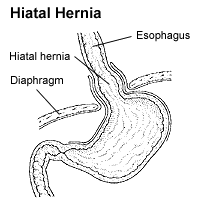
Photo from wikipedia
INTRODUCTION AND OBJECTIVE An open internal inguinal ring (IIR) may be discovered incidentally either in the context of correcting pathology involving the contralateral side or at the time of surgical exploration… Click to show full abstract
INTRODUCTION AND OBJECTIVE An open internal inguinal ring (IIR) may be discovered incidentally either in the context of correcting pathology involving the contralateral side or at the time of surgical exploration for reasons unrelated to a patent processus vaginalis (PPV). The aim of this study is to determine the evolution of an incidentally encountered open IIR in patients undergoing laparoscopy for reasons not associated with unilateral inguinal hernia or cryptorchidism. MATERIALS AND METHODS The authors conducted a prospective study of all patients who underwent laparoscopic surgery in the department of pediatric surgery at Agios Loukas hospital between 2004 and 2013 for various indications. Patients operated for inguinal hernia and cryptorchidism were excluded. During this period, 572 patients underwent laparoscopy for reasons not related to PPV. The median age at time of initial laparoscopy was 9,4 years (range 2 days-16 years). The IIRs were always inspected. No attempt was made to repair the open IIRs, as they were asymptomatic. Parents were informed after the operation, and instructions were given to inform us, in case that inguinal hernia symptoms manifested. The duration of the follow-up was 4 years. RESULTS Among these 572 patients, 39 patients with 44 open IIRs were found (6,82%). From the 39 patients, 35 were male and four were female; 22 had a right open IIR, 12 had a left one, and five of them a bilateral open IIR. The median age was 7,82 years (3-14 years). Four patients were lost during follow-up. Of the remaining 35 patients with 40 open IIRs, four developed an inguinal hernia (11,43%) and were operated on with laparoscopically assisted (subcutaneous endoscopically assisted ligation [SEAL]) technique at the time of diagnosis. The study results are demonstrated on Fig. 1. DISCUSSION The percentage of an incidentally discovered open IIR in this study is lower in comparison with studies including patients with PPV pathologies. There is a possibility, in those patients, of underlying pathology which can affect both sides. It is also lower in comparison with previous studies including younger patients. However, gender and side predominance is in accordance with most published studies. In this study group, the possibility of developing a symptomatic hernia from an asymptomatic open IIR is rather small. CONCLUSIONS An incidentally discovered open IIR in patients without symptoms, excluding those with contralateral inguinal hernias or cryptorchidism, has relatively low chance of developing an inguinal hernia. Thus, the authors support the strategy of close follow-up in these patients.
Journal Title: Journal of pediatric urology
Year Published: 2019
Link to full text (if available)
Share on Social Media: Sign Up to like & get
recommendations!